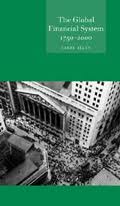 The Global Financial
System 1750 - 2000 by Larry Allen
The Global Financial
System 1750 - 2000 by Larry Allen
 The Global Financial
System 1750 - 2000 by Larry Allen
The Global Financial
System 1750 - 2000 by Larry Allen
It seems easy to drown in the details, so I like books like this that have big scope and let you think about the competing interests over time. Countries seem to go from pegging their currency to gold/silver/dollar to free floating and back to a peg when they trash their currency by printing their reputation away.
Following the American Revolution, the state legislatures in the United States followed the English practice of granting charters of incorporation on a case-by-case basis. Various groups complained that businesses gaining charters to organize as corporations were receiving special privileges owing to political connections, sometimes to bribery. Connecticut led the American states towards the liberalization of company laws with the adoption in 1837 of an act that established a routine and mechanical process for chartering corporations. Applicants for a corporate charter needed only to file certain information with a state office, dispensing with the need to lobby the legislatures or wait for legislative action to approve the charter. Connecticut's precedent was infectious in other state legislatures and the United States became fertile ground for the corporate form of business organization, leaving behind Britain, France, and the rest of Europe. Britain would only catch up in 1856, and in 1867 France would substantially streamline the process for establishing corporations with limited liability. In Germany joint-stock companies were rare before 1850.
The stock market boom of the 1920s sparked another wave of mergers and holding company formation. Electrical utility and other industries built pyramids of holding companies that concentrated vast power in the hands of a small group of investors, but at the risk of extreme financial leverage. The system was complicated but worked as follows: a subsidiary at the base of the pyramid owning $100 million in assets was financed 50 per cent by debt and 50 per cent by stock. All the stock of the company was owned by a holding company in the first tier of the pyramid, giving the holding company control over $100 million in assets with only a $50 million investment. The first-tier holding company was also financed 50 per cent by debt and 50 per cent by stock....
With much more disastrous consequences than Britain experienced, France turned to inconvertible paper money from 1789 to 1796, amid the French Revolution and wars with Britain. France allowed its paper money experiment to deteriorate into an inflationary riot,...
Nevertheless in October 1789 the financially hard-pressed National Assembly, the first government of revolutionary France, confiscated Church lands and issued assignats, certificates of government indebtedness, bearing 5 per cent interest, to be accepted in payment for Church land sold to private buyers....
Constantine 1 introduced the solidus, a gold coin popularized by the sound money policies of the Byzantine government, becomign the foundation of the international monetary system during the Middle Ages, faithfully maintaining its purity and weight for nearly 1,000 years, a record for any currency, even today.
Bills of exchange transactions hid interest charges in fees and adjustments to foreign exchange rates (Directly charging interest violated Church doctrine against usury and was prohibited).